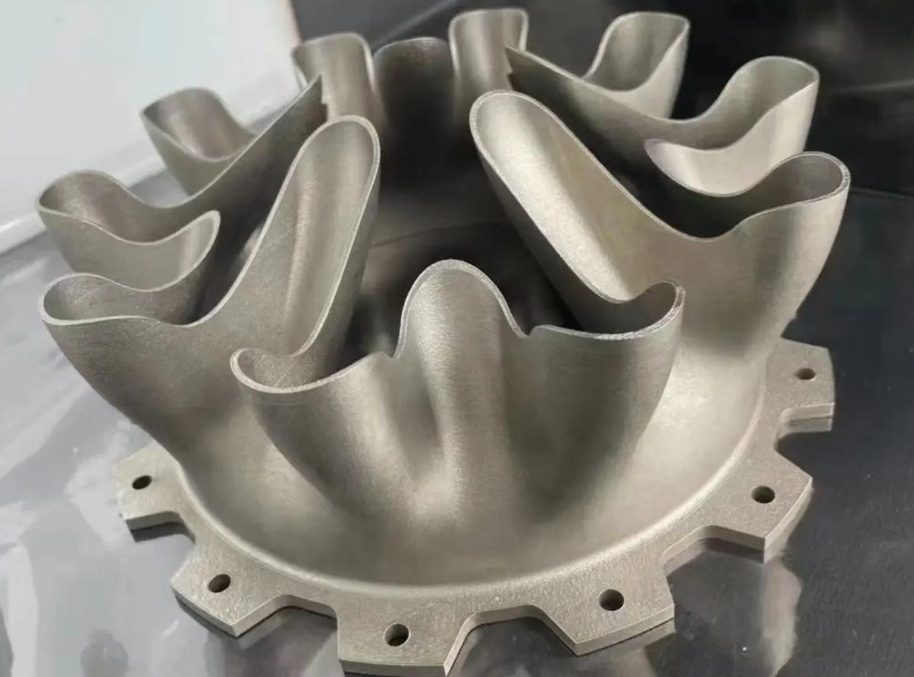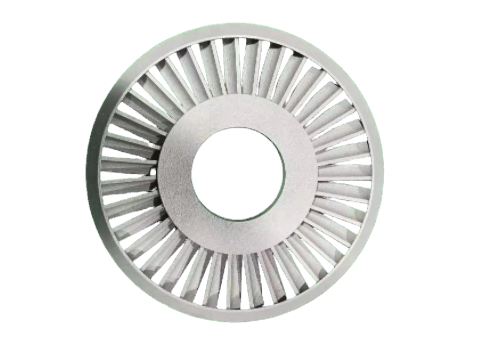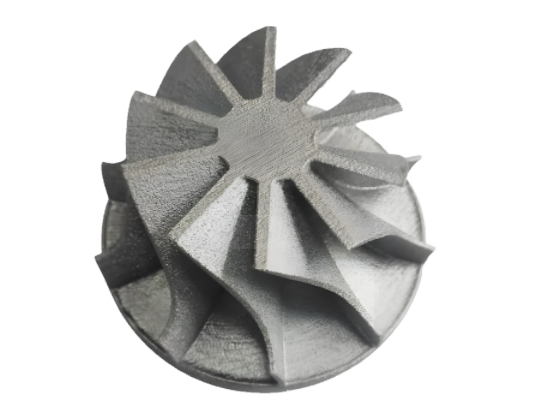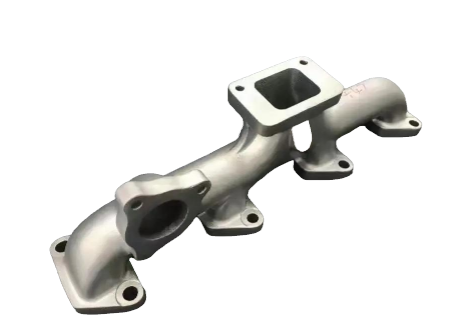Metal 3D printing, also known as additive manufacturing, is a powerful technology for creating complex metal parts with high precision. For beginners, understanding the practical aspects of design, material selection, and post-processing is essential to achieve reliable results. This guide provides a detailed, experience-based overview of key considerations for metal 3D printing, focusing on technical accuracy and practical advice. Whether you're prototyping or producing small batches, these insights will help you navigate the process effectively.
Thread Design: Why Tapping is Preferred Over Direct Printing
Threads, both internal and external, are critical features in many metal parts, but direct printing of threads in metal 3D printing is not recommended. The layer-by-layer nature of additive manufacturing results in threads with poor surface quality and dimensional accuracy, rendering them unusable without further processing. Instead, tapping threads after printing or leaving material for secondary machining is the preferred approach.
Directly printed threads often exhibit issues such as incomplete thread profiles, rough surfaces, and inconsistent pitch. These flaws make it difficult to achieve proper fastening or mating with standard components. To address this, design parts with unthreaded holes or bosses, allowing for tapping or threading during post-processing. For internal threads, ensure the hole diameter is slightly smaller than the tap size to accommodate material removal. For external threads, leave excess material (e.g., a cylindrical boss) for machining.
Secondary machining ensures threads meet precise tolerances, typically within ±0.05 mm for standard fasteners. This step is critical for functional assemblies, as printed threads cannot reliably handle torque or load without refinement.

Wall Thickness: Minimum Requirements for Printability
Wall thickness is a fundamental design consideration in metal 3D printing. Walls thinner than 0.5 mm are generally not guaranteed to print successfully due to limitations in the printing process, such as laser spot size and thermal distortion. Thin walls may collapse, warp, or fail to form properly during printing or sintering.
To ensure structural integrity, maintain a minimum wall thickness of 0.5 mm for most metal materials. For high-strength applications or parts subject to mechanical stress, consider increasing wall thickness to 1.0 mm or more, depending on the material and geometry. Thicker walls also reduce the risk of deformation during high-temperature sintering, a common step in metal 3D printing processes like binder jetting or selective laser melting (SLM).
When designing thin-walled structures, such as shells or lattice components, consult with your printing service provider to verify material-specific guidelines. Testing small sections of the design can help confirm printability before committing to full production.
Assembly Design: Clear Communication and Gap Tolerances
Designing parts for assembly in metal 3D printing requires careful planning to ensure proper fit and functionality. If your project involves multiple components, provide an assembly diagram to your printing service provider. This diagram should clearly indicate how parts fit together, including any specific alignment or orientation requirements.
Most providers will assemble parts before shipping if instructed, but failure to provide assembly instructions may result in unassembled components. To facilitate assembly, incorporate a single-sided gap tolerance of 0.15 mm between mating parts. This gap accounts for surface roughness and dimensional variations inherent in metal 3D printing. For example, a shaft and hole designed for a sliding fit should have a 0.15 mm clearance on each side, resulting in a total diametric clearance of 0.3 mm.
Precise gap tolerances are especially important for moving parts or press-fit assemblies. Overly tight fits can lead to binding or damage, while excessive gaps may cause looseness or misalignment. Always verify tolerances with your provider, as actual results may vary based on the printing system and material.

High-Precision Features: Planning for Secondary Machining
Metal 3D printing excels at producing complex geometries, but it often falls short for high-precision features like bearing holes, critical diameters, or flat mating surfaces. These features typically require tolerances tighter than the ±0.2 mm accuracy of standard printed parts. To achieve the necessary precision, design parts with machining allowances and plan for secondary processing.
For bearing holes, leave an additional 0.5–1.0 mm of material on the diameter to allow for reaming or boring. Similarly, for flat surfaces requiring parallelism or perpendicularity, add 0.3–0.5 mm of stock for milling or grinding. These allowances ensure that post-processing can achieve tolerances as tight as ±0.01 mm, depending on the machining method.
Communicate machining requirements clearly in your design files, including annotations for critical dimensions and surface finishes. Working closely with your provider to align on machining capabilities can prevent costly errors and ensure the final part meets specifications.
Deformation Risks: Managing Thin and Elongated Structures
High-temperature sintering, a common step in metal 3D printing, can cause deformation in thin-walled, elongated, or shell-like structures. This occurs due to thermal stresses and material shrinkage, which are more pronounced in materials like stainless steel or titanium alloys. While metal 3D printing is ideal for complex geometries, its precision and surface quality are generally inferior to traditional machining.
To minimize deformation, consider reinforcing thin sections with ribs or gussets during the design phase. For elongated parts, orient the part in the print bed to reduce thermal gradients, and consult with your provider about support structures. Shell-like structures may benefit from internal lattice supports to maintain rigidity during sintering.
Expect some degree of deformation in complex parts, and plan for post-processing to correct critical dimensions. For applications where precision is paramount, metal 3D printing may serve as a near-net-shape process, with machining used to achieve final tolerances.

Surface Finish: Understanding As-Printed Quality
As-printed metal parts typically have a rough surface with visible layer lines and a characteristic "pitted" appearance. The surface roughness is approximately Ra 7 (micrometers), which is significantly rougher than machined or polished surfaces (Ra 0.8 or better). This finish is acceptable for prototypes or non-cosmetic parts but may require post-processing for functional or aesthetic applications.
Surface roughness can affect part performance, particularly in applications involving sliding contact or fluid flow. To improve surface quality, consider post-processing methods like sandblasting, tumbling, or electrochemical polishing. These techniques can achieve a smoother finish, typically Ra 2.5–3.5, depending on the method and part geometry.
For parts requiring specific surface finishes, include requirements in your design brief. Testing small samples can help determine the optimal finish for your project without over-specifying costly treatments.
Dimensional Accuracy: What to Expect
Standard metal 3D printed parts achieve dimensional accuracies of ±0.2 mm, suitable for prototypes and functional components with moderate tolerances. However, actual tolerances can vary based on part size, material, and printing technology. Larger parts or those with overhangs may exhibit greater deviations due to thermal effects and support removal.
To improve accuracy, minimize overhangs with angles exceeding 45 degrees, as these features often require supports that can introduce stresses or surface irregularities when removed. Conduct test prints to validate critical dimensions, especially for complex designs. For applications demanding higher precision, secondary machining is often necessary to refine tolerances.
Always discuss accuracy expectations with your printing service, as their equipment and expertise can influence outcomes. Providing detailed design specifications can help align expectations and optimize the printing process.
Applications: Prototyping and Small-Batch Production
Metal 3D printing is primarily used for rapid prototyping und small-batch production. Its ability to produce complex geometries quickly makes it ideal for testing designs before committing to traditional manufacturing methods. Industries such as automotive, aerospace, and medical devices benefit from its ability to create lightweight, intricate parts with reduced lead times.
For prototyping, metal 3D printing allows for iterative design changes without the need for expensive tooling. Small-batch production is cost-effective for quantities up to a few hundred parts, particularly when complex shapes or customized features are required. Beyond these quantities, traditional methods like casting or forging may become more economical.
Consider metal 3D printing when design complexity or low-volume production justifies the cost, and plan for secondary processing to meet functional requirements.

Post-Processing: Enhancing Material Properties
Metal 3D printed parts can undergo the same post-processing treatments as traditionally manufactured parts, including machining, heat treatment, coating, or anodizing. These processes enhance mechanical properties, improve surface quality, or add specific functionalities like corrosion resistance.
For example, milling or turning can achieve tight tolerances, while heat treatment can increase hardness or relieve residual stresses from printing. Surface treatments like powder coating or electroplating can improve aesthetics and durability. The choice of post-processing depends on the material and application, so consult with your provider to select the most appropriate methods.
Post-processing is often necessary to achieve final part performance, so budget for these steps in your project planning.
Material Options for Metal 3D Printing
Selecting the right material is critical for achieving desired part performance in metal 3D printing. The following table summarizes commonly used materials, their properties, and typical applications:
| Material | Properties and | Anwendungen |
|---|---|---|
| Titanium Alloy (Ti-6Al-4V, TC4) | High strength-to-weight ratio, excellent corrosion resistance, biocompatible | Aerospace components, medical implants, high-performance prototypes |
| Aluminium-Legierung (AlSi10Mg) | Lightweight, good thermal conductivity, moderate strength | Automotive prototypes, heat exchangers, lightweight structural parts |
| Stainless Steel (316L) | Corrosion resistance, good mechanical properties, weldable | Functional prototypes, marine components, general-purpose parts |
| Tool Steel (1.2709) | High hardness, wear resistance | Molds with complex cooling channels, tooling inserts |
Stainless steel and aluminum alloys are widely used for prototyping due to their affordability and versatility. Titanium alloys are preferred for high-performance applications, while tool steel is ideal for mold-making, particularly for conformal cooling channels. Note that printed parts often require secondary machining for assemblies due to surface finish and tolerance limitations.
Discuss material availability and costs with your provider, as prices can vary significantly. For example, tool steel and aluminum are generally more cost-effective than titanium.
Key Takeaways
Metal 3D printing offers unparalleled flexibility for creating complex metal parts, but it requires careful design and planning to achieve functional results. By following these key considerations—avoiding direct thread printing, maintaining minimum wall thickness, designing for assembly, planning for machining, and accounting for deformation—you can maximize the benefits of this technology. Selecting the right material and post-processing methods further ensures your parts meet performance requirements.
Collaboration with an experienced printing service provider is essential for success, particularly for beginners. Provide clear documentation, test designs iteratively, and budget for secondary processing to achieve high-quality parts. With these practices, metal 3D printing can be a powerful tool for prototyping and small-batch production.
